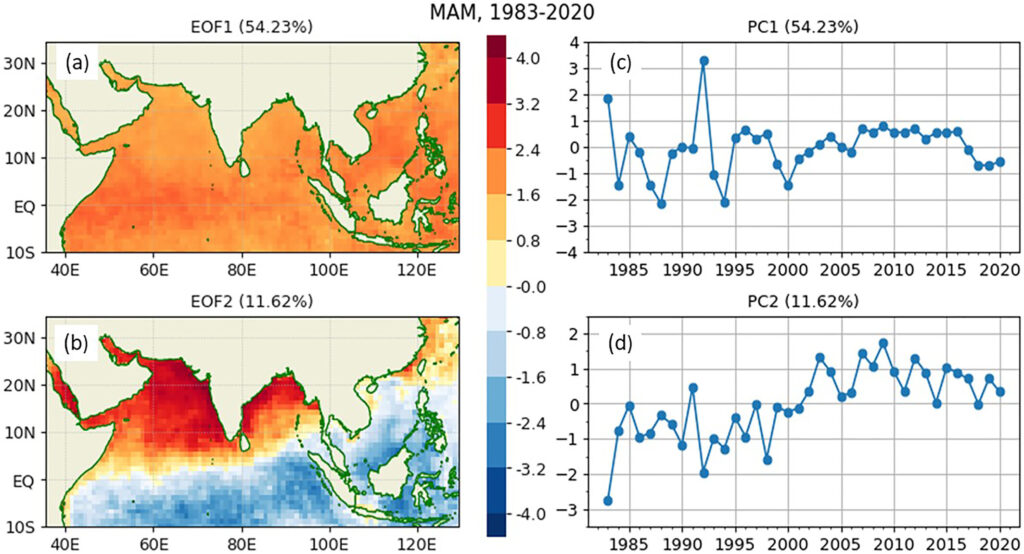
ESSIC scientists Yongsheng Zhang and James Frech recently published a paper in the journal JGR Atmospheres titled “Interdecadal Springtime Aerosol Increase in the North Indian Ocean Observed From the Satellite AVHRR Instrument”.
In the paper, the researchers use a 38-year aerosol optical thickness (AOT) satellite product from the Advanced Very High-Resolution Radiometer (AVHRR) to investigate the aerosol variabilities in the North Indian Ocean. They found that there are significant differences in aerosol levels between the equatorial region and the northern part of the Indian Ocean, especially with a noticeable increase in the Arabian Sea and Bay of Bengal since 2002.
The researchers attribute this variation to El Niño from 1983 to 2001 and a warm phase of the Atlantic Multi-decadal Oscillation (AMO) from 2002 to 2020. These climate patterns have created drier and warmer conditions along the coasts of East Africa, the Arabian Peninsula, and South Asia, which have led to higher aerosol emissions and longer-lasting aerosols. A warm phase of the AMO may aid the development of the remote teleconnection pattern in the midlatitude regions of the Northern Hemisphere, and thus reinforce the anomalies of atmospheric circulation in the subtropical regions.
Yongsheng Zhang joined ESSIC/CISESS, University of Maryland in 2012 and has been affiliated with NOAA/NESDIS/NCEI since 2007. He has been responsible for carrying out research for a better understanding of climate variability through the application of satellite observations, an effective scientific data stewardship, and the generation of value-added satellite products. Through close collaborations with NESDIS’ STAR, OCS, and OSPO, his works also ensure a successful ingestion, archival, and dissemination of the oceanographic products from the satellite missions of NOAA and its international partners (S-NPP, NOAA-20 and 21, Jason-2/3, MetOp-B/C, Sentinel-1A, RADARSAT2, RCM, etc.). He has long-term interests in studying the atmosphere and ocean climate variability in the Indo-Pacific regions.
James Frech is a faculty assistant at the University of Maryland CISESS/ESSIC cooperative institute working for NOAA/NCEI in satellite oceanography. He got his start working with NOAA as a Lapenta summer intern after his junior year of undergrad at UMD. He has continued working with NOAA ever since and in addition is currently working towards his master’s degree in applied machine learning, also at UMD. In his current work, he contributes to research in offshore wind and aerosol effects on climate variability. His long-term interests include applying AI/ML to further the advancement of scientific discovery.
To access the paper, click here: “Interdecadal Springtime Aerosol Increase in the North Indian Ocean Observed From the Satellite AVHRR Instrument”.





